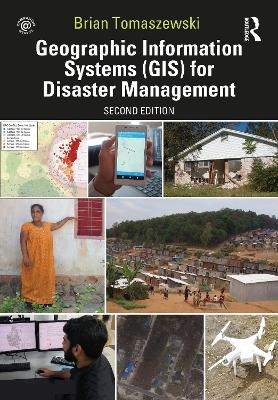
Geographic Information Systems (GIS) for Disaster Management
Routledge (Verlag)
978-1-138-48986-8 (ISBN)
Now in its second edition, Geographic Information Systems (GIS) for Disaster Management has been completely updated to take account of new developments in the field.
Using a hands-on approach grounded in relevant GIS and disaster management theory and practice, this textbook continues the tradition of the benchmark first edition, providing coverage of GIS fundamentals applied to disaster management. Real-life case studies demonstrate GIS concepts and their applicability to the full disaster management cycle. The learning-by-example approach helps readers see how GIS for disaster management operates at local, state, national, and international scales through government, the private sector, non‐governmental organizations, and volunteer groups.
New in the second edition:
a chapter on allied technologies that includes remote sensing, Global Positioning Systems (GPS), indoor navigation, and Unmanned Aerial Systems (UAS);
thirteen new technical exercises that supplement theoretical and practical chapter discussions and fully reinforce concepts learned;
enhanced boxed text and other pedagogical features to give readers even more practical advice;
examination of new forms of world‐wide disaster faced by society;
discussion of new commercial and open-source GIS technology and techniques such as machine learning and the Internet of Things;
new interviews with subject-matter and industry experts on GIS for disaster management in the US and abroad;
new career advice on getting a first job in the industry.
Learned yet accessible, Geographic Information Systems (GIS) for Disaster Management continues to be a valuable teaching tool for undergraduate and graduate instructors in the disaster management and GIS fields, as well as disaster management and humanitarian professionals.
Please visit http://gisfordisastermanagement.com to view supplemental material such as slides and hands-on exercise video walkthroughs. This companion website offers valuable hands-on experience applying concepts to practice.
Brian Tomaszewski is an associate professor and director of the Center for Geographic Information Science and Technology at the Rochester Institute of Technology in Rochester, NY, USA, and an adjunct professor with the Centre for Disaster Management and Mitigation at the Vellore Institute of Technology, India. His research interests are in the domains of geographic information science and technology, geographic visualization, spatial thinking, disaster management, and forced displacement. His published research has appeared in top scientific journals such as Information Visualization, Computers, Environment and Urban Systems, Computers and Geosciences, and The Cartographic Journal. He is the co-creator of the Refugee GIS (RefuGIS) project that is the world’s first innovation project to empower refugees themselves to use GIS. Tomaszewski is actively involved in international disaster management and refugee affairs research with research projects funded by the US National Science Foundation (NSF) in Rwanda, Germany, and Jordan as well as collaborations with the United Nations High Commissioner for Refugees (UNHCR) in Rwanda and Jordan.
1. A Survey of GIS for Disaster Management 2. Fundamentals of Geographic Information and Maps 3. Geographic Information Systems 4. Geographic Information Systems and Allied Technologies 5. Disaster Management and Geographic Information Systems 6. Geographic Information Systems and Disaster Planning and Preparedness 7. Geographic Information Systems and Disaster Response 8. Geographic Information Systems and Disaster Recovery 9. Geographic Information Systems and Disaster Mitigation 10. Special Topics, Future Technology, Professional Career Options and Geographic Information Systems (GIS) Trends
| Erscheinungsdatum | 23.09.2018 |
|---|---|
| Zusatzinfo | 6 Tables, black and white; 232 Illustrations, black and white |
| Verlagsort | London |
| Sprache | englisch |
| Maße | 178 x 254 mm |
| Gewicht | 997 g |
| Themenwelt | Naturwissenschaften ► Biologie ► Ökologie / Naturschutz |
| Naturwissenschaften ► Geowissenschaften ► Geografie / Kartografie | |
| Sozialwissenschaften ► Politik / Verwaltung ► Allgemeines / Lexika | |
| Sozialwissenschaften ► Politik / Verwaltung ► Europäische / Internationale Politik | |
| Sozialwissenschaften ► Soziologie ► Spezielle Soziologien | |
| ISBN-10 | 1-138-48986-7 / 1138489867 |
| ISBN-13 | 978-1-138-48986-8 / 9781138489868 |
| Zustand | Neuware |
| Haben Sie eine Frage zum Produkt? |
aus dem Bereich


